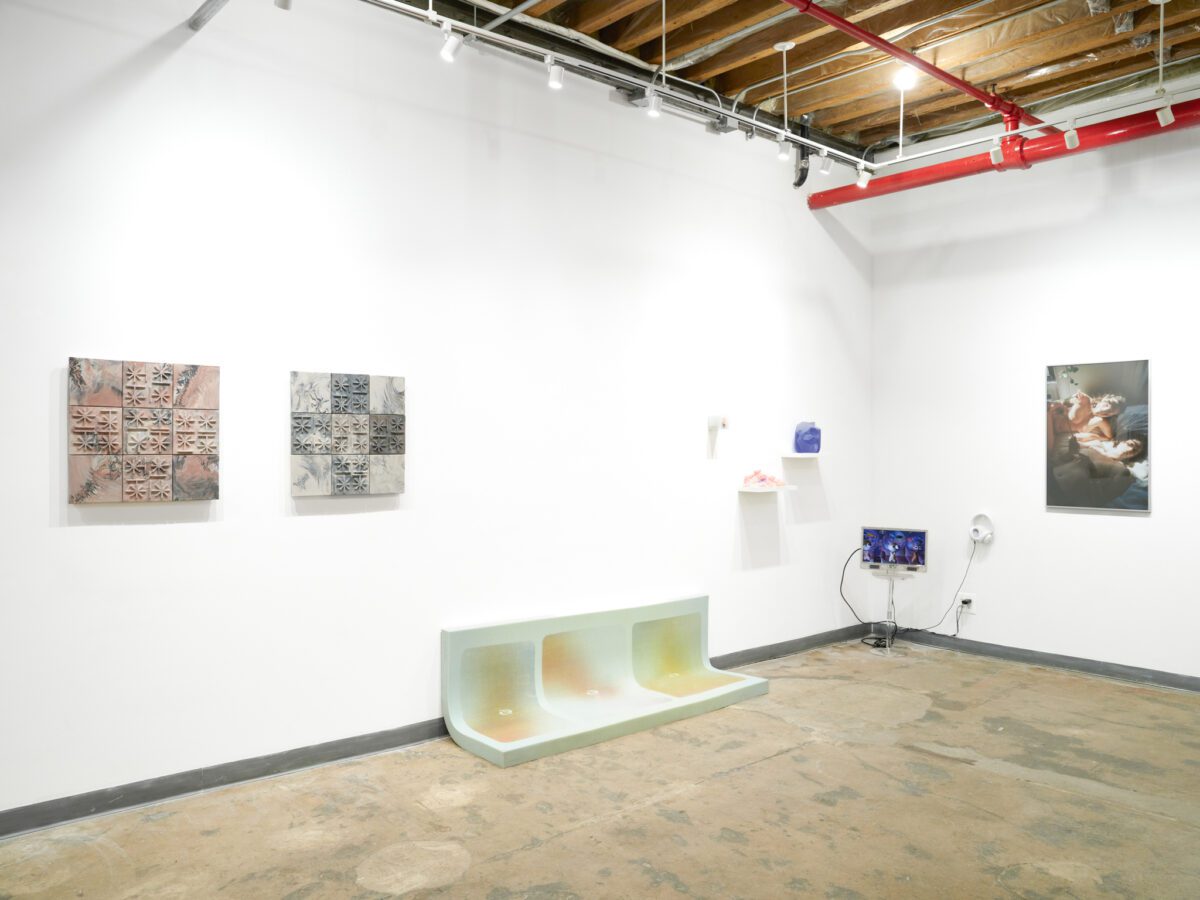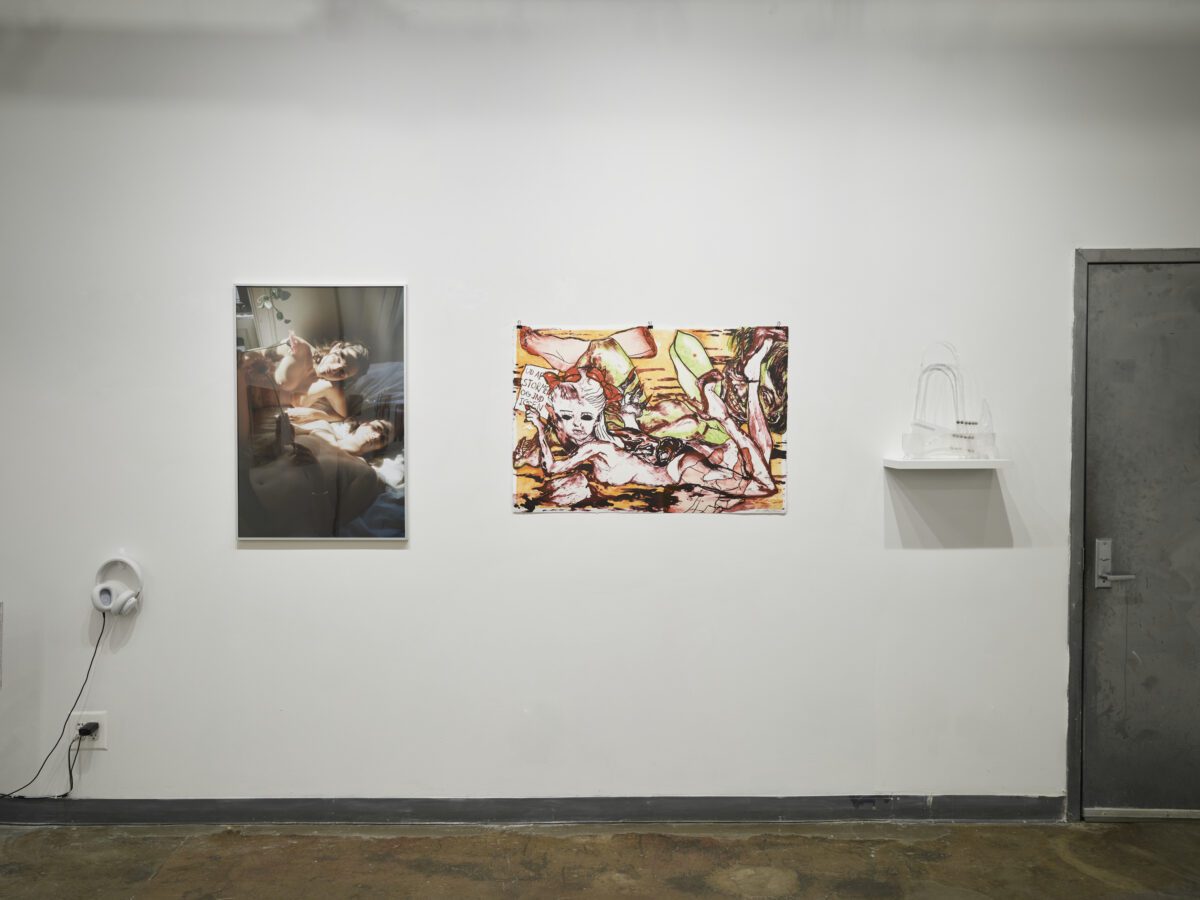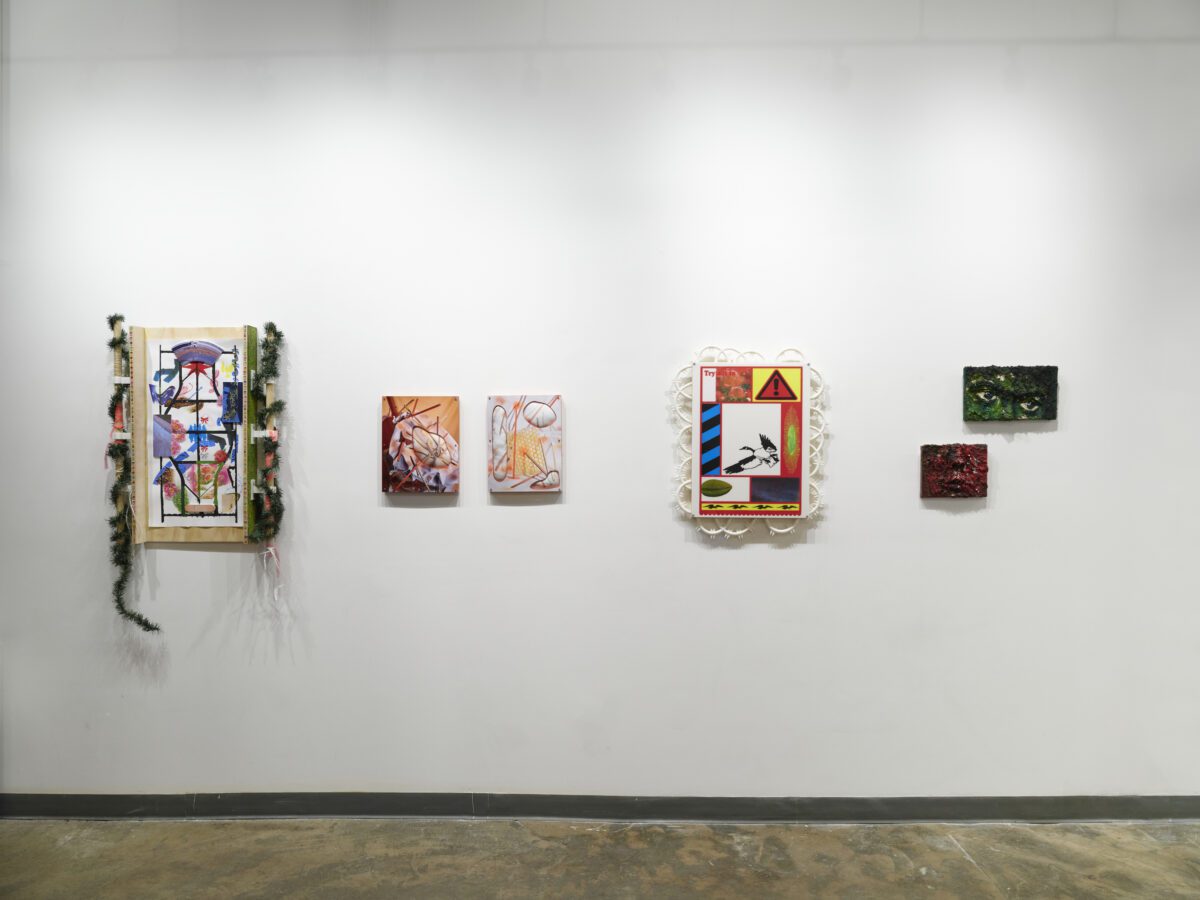DO NOT DISTURB. The phrase seemed antithetical to the exhibition it alluded to and its opening reception of Feb. 15, which invited people in, rather than pushing them away; exposed vulnerability, rather than demanding privacy; and coaxed people to leave their cocoons, rather than to shut eyes and draw blinds.
On the night of the reception, which did double duty as a launch party for the independent arts and culture magazine IMPULSE, it was sleeting outside. The venue, Zepster Gallery, was hiding among the warehouses of industrial East Williamsburg. Still, the dark chill of those backstreets gave way to the warm glow of a gallery jampacked with intriguing art, creative people, and fervent energy. On a night when it would have been especially tempting to order pad thai and curl up under the covers — to put up the proverbial “do not disturb” sign — a throng of people decided to show up for the event, for IMPULSE, and for art and artists.

“The turnout was kind of crazy,” said Meinzer, one of the show’s co-curators. “I mean, it was literally snowing and the gallery can be quite a trek, depending on where you live, so I was excited to see such high energy in the room on a night like that.” Co-curator Victoria Reshetnikov felt similarly: “I was so jittery the whole time, floored by the magnitude of people that trekked out for us.”
DO NOT DISTURB was curated by Meinzer, Reshetnikov, and IMPULSE founder Xuezhu Jenny Wang. On display until March 5, the exhibition features works of sculpture, multimedia, painting, printing, and photography by female and nonbinary artists Anoushka Bhalla, Dahlia Bloomstone, Lesley Bodzy, Magdalena Dukiewicz, Morrison Gong, Anna Sofie Jespersen, Yi Hsuan Lai, Wenfei Quan, Victoria Reshetnikov, Xi Song, and Edra Soto.
The exhibition’s name is a reference to the curators’ intention for the art to speak for itself, without imposed meanings or rigid themes. “One of the biggest challenges was pulling together a coherent curatorial statement with the diverse practices that these artists had,” Wang said. “At the end of the day, we decided to confront this issue directly and question why we felt compelled to come up with one coherent thread that streamlines an exhibition that was celebratory in nature.”

While Wang originally intended to package the show as focusing on body image and gender identity, she and her co-curators ultimately decided that would be an oversimplification of the varied and complex feelings and messages on display.
“The art should speak for itself, and I feel really strongly that language can hinder that at times,” said Meinzer, who wrote the exhibition’s manifesto. “Dialogues between artworks certainly exist… I like to imagine all of the artworks in the room looking at each other, and they really start to reflect each other in a visual way. But again, I really want to keep each artist’s perspective unique and true to their work.”

The themes that did emerge from the exhibition, while incidental, were powerful. The human body took shape in Lesley Bodzy’s pink-and-purple pile of silicone ears, Magdalena Dukiewicz’s use of hair and blood, Xi Song’s waving hand, Anoushka Bhalla’s zoomed-in, oil-paint facial features, Morrison Gong’s skin-baring photography, and Anna Sofie Jespersen’s lithograph nude. Architectural intrigue was present in Reshetnikov’s screenprinted table and Edra Soto’s porcelain patchworks. These threads created a dialogue between works, but one that posed more questions than it answered. Any prescribed lens would only disturb and dilute the viewer’s own viewpoint.
This openness to interpretation seemed to align with the thinking of many of the artists on display, who preferred to obscure the intended meanings of their work and allow beholders to experience them in their own way. “I embrace ambiguity and open-ended associations,” Dukiewicz said, “and prefer not to lead viewers toward a specific conclusion or prescribe a particular emotional response.” Bodzy agreed: “I hope my works were somewhat mysterious in their meanings,” she said.
The show, much like IMPULSE itself, was by and for artists. The ultimate unifying factor among the artworks was the artists behind them, who had all worked with IMPULSE in some capacity. Wang described the exhibition as “a friends and family show,” a celebration of the community that is rapidly forming around the magazine and its dynamic engagement with cutting-edge contemporary art.
“Discourse moves through all channels of cultural output, including the visual arts,” Meinzer said. “IMPULSE champions the ability for physical objects to participate in such a discourse. We want art to be part of the conversation that is taking place all around us.” It’s a conversation worth opening your eyes and leaving your house for.
DO NOT DISTURB: An IMPULSE Magazine Benefit Exhibition will be on view at 220 Bogart Street, Brooklyn through March 8th, 2025.

